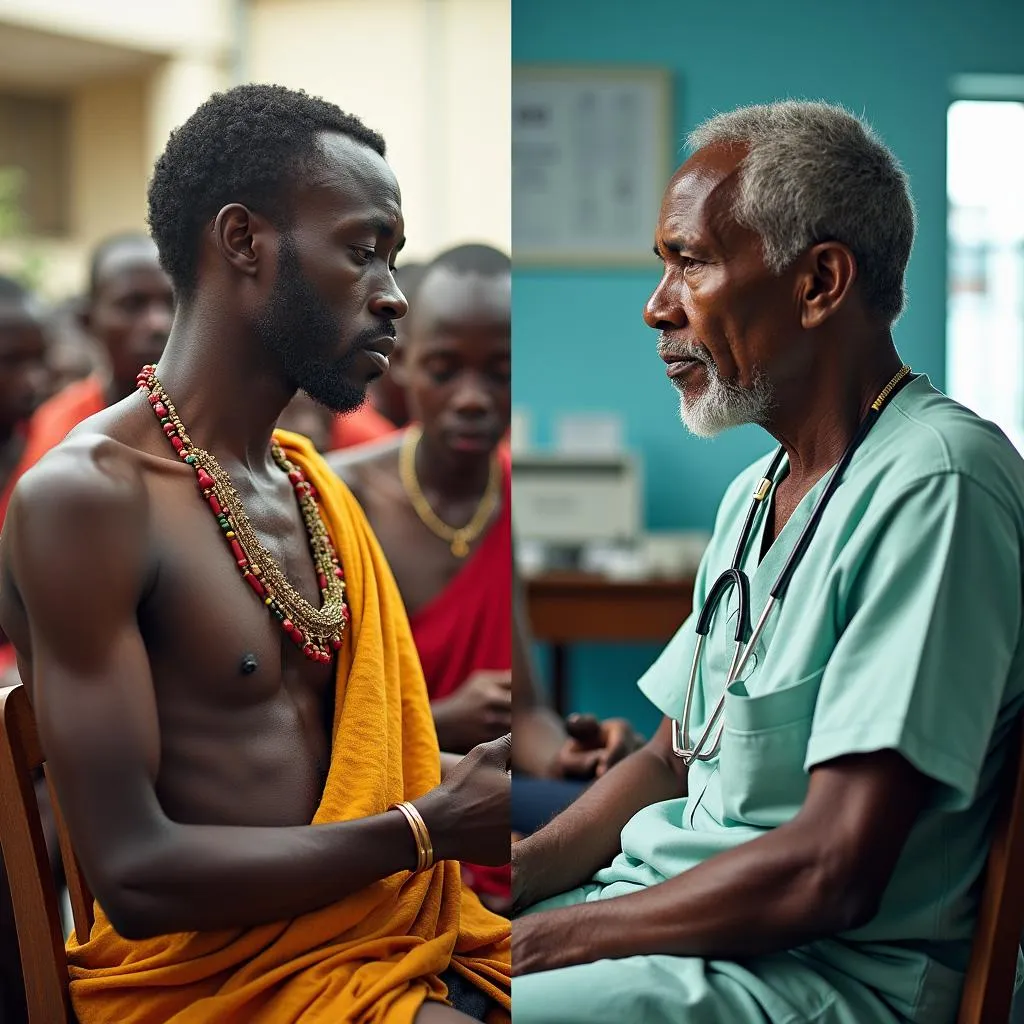African circumcision is a topic often shrouded in mystery and misconception. While “African Circumcision Photos” might be a search term driven by curiosity, it’s crucial to approach this subject with sensitivity and a desire for understanding. Circumcision in Africa is deeply rooted in tradition, cultural beliefs, and social structures, varying significantly across the continent’s diverse ethnic groups.
A Multifaceted Practice: Exploring the Different Faces of African Circumcision
It’s important to note that generalizing about “African circumcision” is misleading. Each community, from the Maasai of East Africa to the Xhosa of Southern Africa, holds its own unique customs and beliefs surrounding this practice. While some view it as a rite of passage into manhood, others associate it with spiritual cleansing or social acceptance.
Unveiling the Reasons: Why is Circumcision Practiced in Africa?
 African Circumcision Ritual
African Circumcision Ritual
The motivations behind circumcision in Africa are diverse and often intertwined. In many communities, it signifies the transition from boyhood to manhood, marking a young man’s readiness for adult responsibilities. This initiation process can involve tests of courage, endurance, and knowledge of tribal customs. Circumcision may also be seen as a way to enhance hygiene or, in certain cultures, as a religious obligation.
Beyond the Physical: The Social and Spiritual Implications
Circumcision in Africa extends far beyond the physical act. It represents a profound connection to ancestry, heritage, and communal identity. By undergoing this ritual, young men are formally integrated into the social fabric of their communities, gaining recognition as responsible members. The ceremonies themselves often involve intricate dances, songs, and storytelling, further solidifying the cultural significance of the event.
Navigating the Controversy: Health, Consent, and Cultural Sensitivity
 African Circumcision Debate
African Circumcision Debate
It is crucial to acknowledge the ongoing debate surrounding circumcision, particularly regarding health risks and consent. While some forms of traditional circumcision might pose health risks, others are performed with proper hygiene and care. The issue of consent is equally complex, often intertwined with cultural norms and expectations. Engaging in respectful dialogue and understanding the nuances of each community’s practices is essential.
Looking Beyond the Lens: Understanding the Human Stories
When researching “african circumcision photos,” it’s important to remember that behind each image lies a human story. These photos should not be viewed as mere spectacles but rather as windows into complex cultural practices that have shaped generations. Approaching this topic with sensitivity, respect, and a commitment to cultural understanding will lead to a more informed and nuanced perspective.
Conclusion: Moving Beyond Sensationalism Towards Respectful Inquiry
While the internet might offer glimpses into African circumcision through photos, true understanding requires delving deeper. By exploring the historical context, cultural motivations, and individual experiences surrounding this practice, we can move beyond sensationalism and engage with this aspect of African culture in a respectful and insightful manner.
Leave a Reply